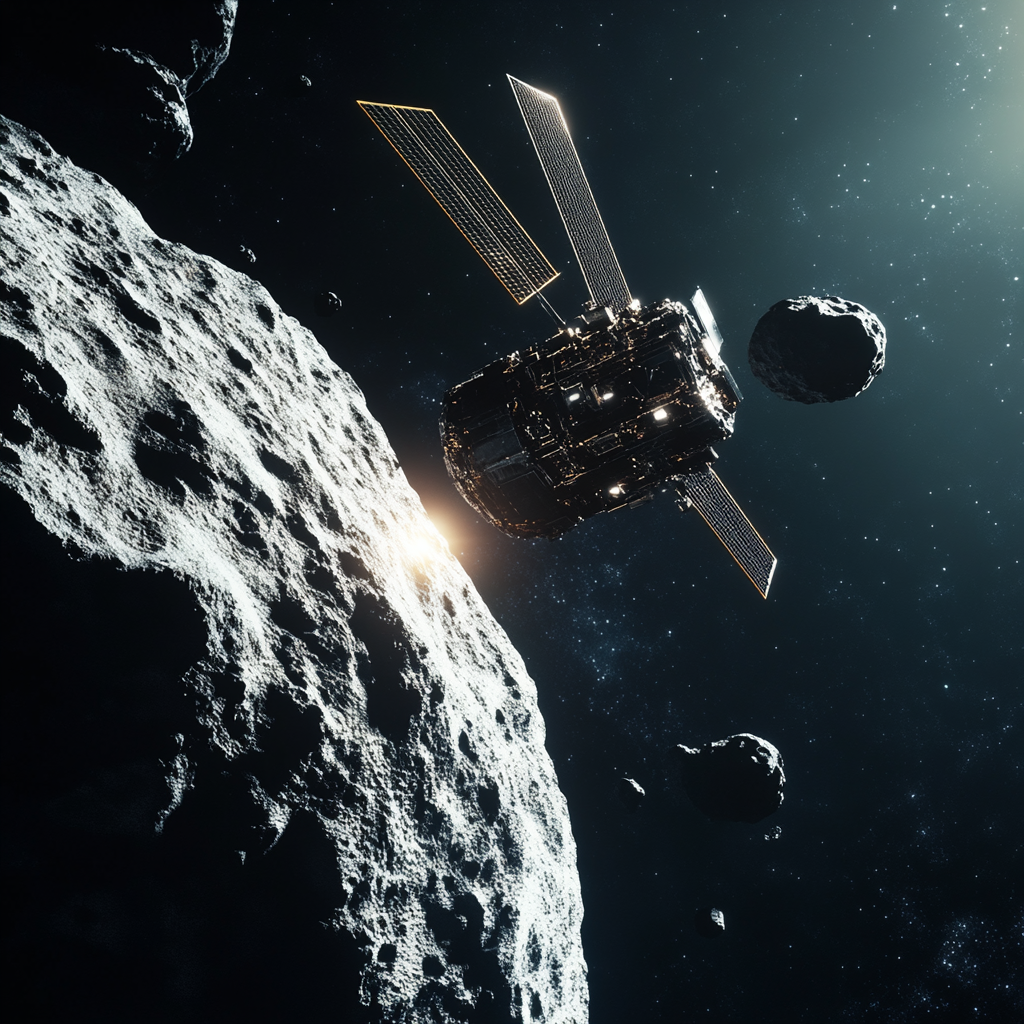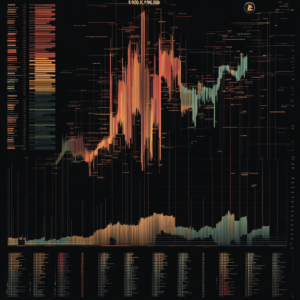
“🎇🚀🌌🖐️🌍🌙📸⭐”
As the European Space Agency's Hera asteroid probe embarks on its epic voyage towards the Didymos binary asteroid system, it gives us a heartfelt wave goodbye. Can you feel that mix of longing and excitement? It’s not just a spacecraft saying farewell; it’s humanity sending a piece of itself into the cosmic abyss. Let's dive deep into this adventure—buckle up, because it’s going to be a thrilling ride!
Hera launched on the auspicious day of October 7, 2024, and with that ignition, it marked ESA's inaugural dedicated planetary defense mission. Now, here's where it gets juicy! This mission isn’t just about exploration; it’s about learning how to nudge asteroids off course to avoid a catastrophic collision with our planet. Talk about having some serious insurance! The Hera probe’s main quest is to rendezvous with the Dimorphos asteroid, which was recently smacked by NASA’s DART spacecraft in 2022. Yes, you heard that right—a cosmic game of bumper cars! The impact altered Dimorphos's orbit around its bigger sibling, Didymos, leading us toward a brighter, safer future in asteroid deflection technology. Can you imagine?
During its initial glide through the vastness of space, Hera took a moment to glance back at its old friends—Earth and the Moon. Using its Thermal Infrared Imager (TIRI), a fancy piece of tech courtesy of Japan Aerospace Exploration Agency (JAXA), Hera beamed back a mesmerizing series of thermal images captured between October 10 and 15. Picture it: billions of pixels painting a picture of our world from between 1.4 million to a staggering 3.8 million kilometers away. Earth, that beautiful blue marble, slowly shrinking into the abyss while the Moon transformed from a crescent to a full glow-up. It’s as if we were treated to a cosmic farewell party with an unforgettable light show.
Let’s ooh and aah over the gadgets on this space chariot! Hera is loaded with nifty tools, including its TIRI and two Asteroid Framing Cameras (AFC). Imagine professional cameras capable of capturing images of our planet in stunning detail. One look from the AFC reveals Earth’s fragile beauty—clouds swirling like cotton candy above a sunlit Pacific Ocean, while the TIRI takes charge with its thermal gaze, giving us a view of the Eastern U.S. and the Atlantic, with the North Pole elegantly situated at the top. It’s hard not to feel a sense of connection as Hera immortalizes these moments.
Now, speaking of connections, Hera has already proven that it means business with some serious deep-space maneuvers. On October 23, it fired its thrusters for an intense 100 minutes! That’s some high-octane stuff. Then there was a shorter, yet equally formidable, thrust on November 6. Why all this fuss? To get a fabulous gravity assist from Mars in March 2025, of course! It’s like getting a cosmic ride from your friend in a sports car to speed up your trip. Mars—our rusty red neighbor—is about to give Hera a tremendous boost to shorten its journey to Didymos.
But hold on, there’s more! That Mars flyby isn’t just about speeding things along. It’s an invitation for a little scientific exploration. As Hera breezes past, it’ll get a chance to check out Deimos, one of Mars's moons. What a delightful dual mission! Once Hera makes it to the Didymos system, it has big plans: a detailed exploration of the asteroid’s surface and its structure. Think of it as homework, but way cooler—figuring out just what happens when you smack an asteroid and how that affects the celestial dynamics of binary systems. Seriously! The questions to be answered are as tantalizing as a thriller novel full of cosmic surprises.
Each step taken by Hera echoes the triumph of NASA’s DART mission, paving the way for future explorations and protective measures against potentially world-ending space debris. Knowledge is power, after all! This mission has the potential to unravel the mysteries of asteroid composition while simultaneously informing humanity about how best to protect itself. Who knew outer space could be such a personal affair?
So, as Hera sails further into the cold abyss, it does so with every pixel it captures, every maneuver it performs, and every theory it tests resonating with significance. It reminds us of our status as guardians of Earth and enthusiasts of cosmic adventure!
And as we look forward to the mesmerizing data and images that Hera will continue to beam back to us, let’s not forget the rich tapestry of exploration that we are weaving together—one mission, one image at a time.
Want to stay up to date with the latest news on neural networks and automation? Subscribe to our Telegram channel: @channel_neirotoken! The stars are only the beginning!

